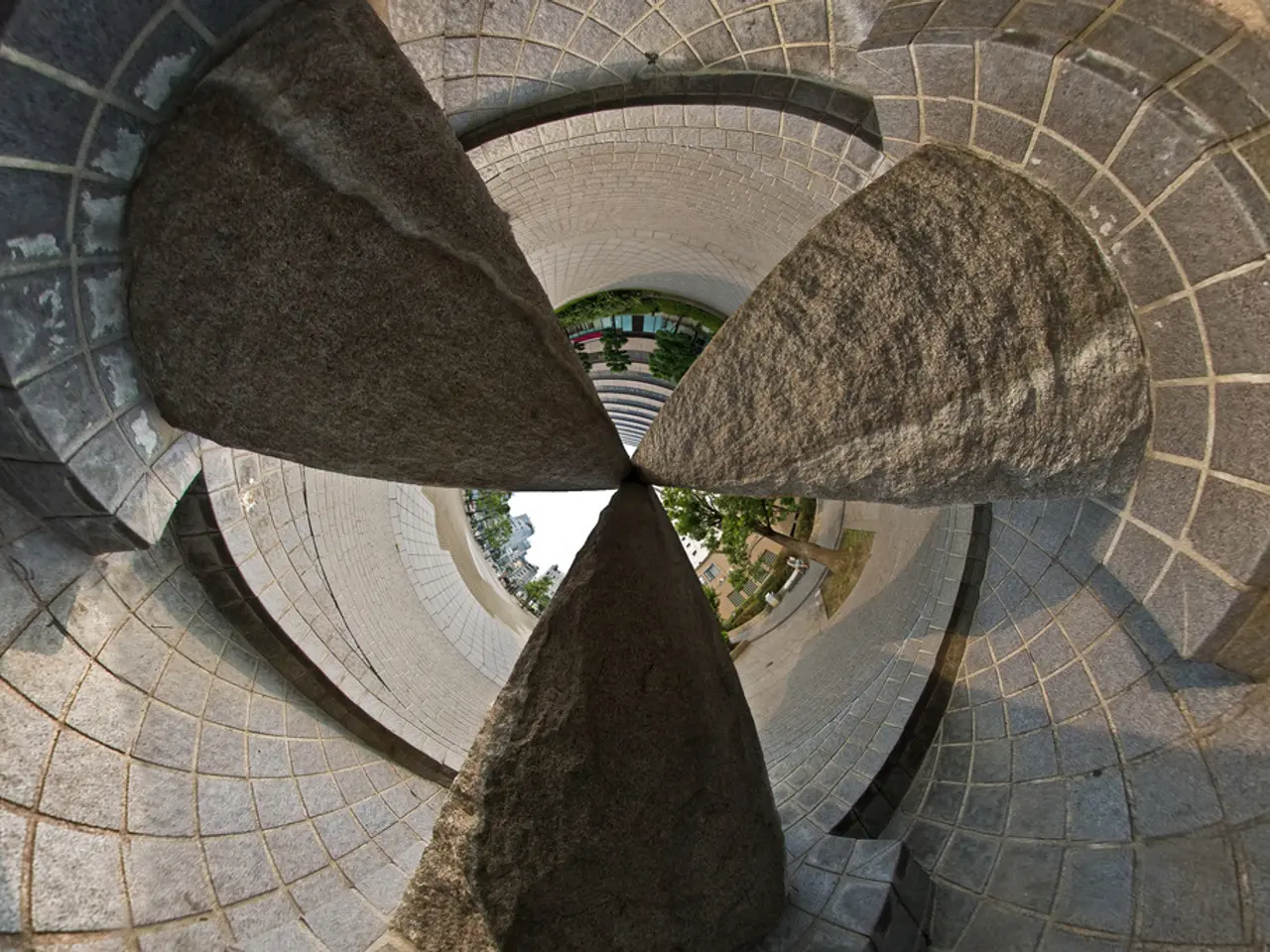Highlighting Techniques for Achieving Focal Impact in Your Declarations Without Causing Dissonance in the Surrounding Environment
=============================================================================
Alex Alonso, a maximalist interior designer, uses layers to create focal points within a space. This technique can be achieved through the use of supersized artworks, high gloss finishes, ceramic lighting, patterned upholstery, or even the strategic placement of an artwork or wall light.
To effectively use emphasis in interior design and create a balanced space, it's essential to establish a clear focal point. This could be an oversized piece of art, a bold accent wall, a dramatic piece of furniture, or an architectural feature like a fireplace or large window. The element should be substantial enough to ground the space and set a visual hierarchy, allowing other design elements to support it without creating chaos.
Maintaining balance while emphasizing a focal point involves the application of the 60-30-10 color rule for visual harmony. This rule suggests using 60% of the dominant color (usually on walls or big furniture), 30% of the secondary color (upholstery, curtains), and 10% as an accent color to highlight the focal point or other details. Employing contrast thoughtfully, such as a complementary or triadic color scheme, can also create visual excitement without overstimulation.
Lighting, especially accent lighting, can be used to highlight the emphasis area, adding depth and directing attention. Furniture and décor should be arranged to radiate from or lead towards the focal point, reinforcing flow and rhythm in the space.
Dan Lovatt, an interior designer and the founder of Lovatt Studio, based in North East, UK, uses contrast in scale of furnishings, juxtaposition of texture, or painting architectural details to highlight their features. He believes good design is about creative solutions that help us to live and feel better.
Balance in interior design comes from restraint, allowing space to breathe, using neutral elements that support the focal point, and ensuring the eye has moments of rest. Overusing emphasis can make a room feel chaotic or disjointed.
In one of his projects, Alex Alonso used heavy walls and drapery in the guest bedroom to draw the eyes up to a less busy treatment on the ceiling. This technique allows the eye to travel around the room, left to right and up and down, creating a comfortable and visually appealing space.
Dan Lovatt graduated with 1st class honours in Interior Design from Teesside University. His work demonstrates the importance of balance in interior design, showing that a room can be both visually striking and harmonious.
- Alex Alonso incorporates decor elements like oversized artworks, high gloss finishes, and patterned upholstery to create focal points within a space, such as a living room, following the principles of maximalist interior design.
- In the realm of interior design, furniture like dramatic pieces and architectural features, such as a fireplace or large window, can establish clear focal points, ensuring visual hierarchy and balance in a space.
- To achieve visual harmony in interior design, the 60-30-10 color rule can be applied — using 60% of the dominant color, 30% of the secondary color, and 10% as an accent color to emphasize the focal point.
- Thoughtful contrast through complementary or triadic color schemes can create visual excitement in an interior design without overstimulating the senses.
- Accent lighting can be used to spotlight the emphasis area in interior design, adding depth and guiding the attention of those in the space.
- Dan Lovatt uses contrast in scale of furnishings, juxtaposition of texture, or painting architectural details to highlight their features, incorporating his beliefs that good design is about creative solutions that help us live and feel better within our home-and-garden lifestyle.




